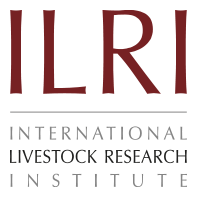Kutchi
Origin and distribution: Kutchi breed derives its name after the region ‘Kutch’ in Gujarat which is the natural habitat of the breed. Apart from Kutch region in northern Gujarat the goats are also found in adjoining areas of southern Rajasthan. The flock size ranges from small to large having 5-300 goats. Most of the flocks are stationary but they migrate for a limited period to adjoining areas during the period of scarcity. Flocks are maintained exclusively an extensive grazing round the year.
Physical Characteristics:Kutchi is a medium sized goat of dual utility (milk and meat) with a compact body and long legs. The coat colour is predominantly black, few animals with white markings are also found. Ears are medium in size, flappy and drooping with typical white markings. Coat is shaggy and dull in appearance with medium to long coarse hairs.
Both the sexes have horns; males have long and strong horn while the females have flat and weak horns. Face is slightly raised. Udder is reasonably developed with well placed long and conical teats.
Performance:Mittal (1991) studied the performance of the breed in arid zone of Rajasthan Kutchi and Marwari goats in rural herds kept exclusively on grazing/browsing land, age at puberty averaged 560 and 326 days respectively, body weight at puberty was 25.5 and 15.8 kg, age at 1st conception 633 and 397 days, age at 1st kidding 781 and 548 days, CR 91.7 and 87.5%, twinning percentage was 0 and 7.1, milk yield 111-116 and 88.5-92.2 kg, and survival rate 100 and 91.7% respectively.
Dixit et al (2008) observed that average number of alleles observed across the studied microsatellite loci was 12.0±1.02. The average expected gene diversity within the population was 0.79±0.02, whereas observed heterozygosity was 0.59±0.06. Thirteen out of the total 25 studied loci showed significant deviations from Hardy-Weinberg equilibrium. The Fis (inbreeding) value was 0.23±0.07. The genetic differentiation among sub-populations of this breed was low (Fst=0.05±0.01).
Yadav et al (2008) analysed growth data in organized farming system. Kumar et al (2006) observed that body weight of Kutchi goat at birth, 3, 6 and 12 months of age were 3.31, 12.82, 18.98 and 28.55 kg, respectively. The adult body weights of male and female were 58.45 and 38.78 kg, respectively. Kutchi goat produced 70 and 95 kg of milk in 90 and 120 days lactation respectively. Kumar et al (2004) estimated least squares means of milk yield for 90 and 150 days, total milk yield, peak milk yield and lactation period which were 69.13±4.01 kg, 94.72±5.10 kg, 112.56±5.65 kg, 1.16±0.11 kg and 202.5±5.65 days, respectively. Yadav et al (2004) found overall least-squares means for 90, 150 days, total milk yield, peak yield and lactation length were 63.46±5.12 kg, 83.52±6.96 kg, 98.44±8.04 kg, 1.08±0.10 kg and 1.56±5.44 days respectively. Yadav et al (2005) constructed selection indices for genetic gain in bodyweight for Kutchi goats. Kumar et al (2002) estimated overall tupping percentage, conception rate and kidding rate were 83.6, 87.2 and 83.7%, respectively, in the flock. The overall frequency of twin births and abnormal kidding were 10.5 and 3.5%, whereas the overall sex ratio was 50.5%.
References





